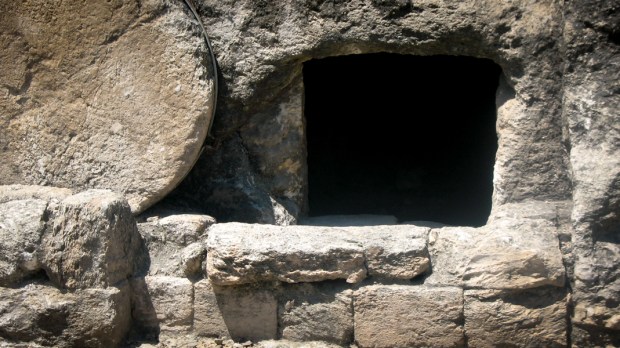When you imagine the stone that was rolled away from the tomb on the morning of the Resurrection, what do you see in your mind? We dare say that many people think of a nice round disk-shaped stone that merely needs a little push to get it rolling.
But recent archaeological studies on the matter suggest otherwise.
Disk-shaped stones to seal the caves in which people were buried in Jesus’ time were rare, as archaeologist Amos Kloner found out. Kloner could find only four such arrangements out of the more than 900 Second Temple-period burial caves around Jerusalem. And those four belonged to royal or well-to-do persons.
The tomb in which Jesus lay belonged to an ordinary person. As we know from Matthew 27, it was the borrowed tomb of Joseph of Arimathea.
“Archaeology therefore suggests that the tomb of Jesus would have had a cork-shaped blocking stone,” says Megan Sauter in Bible History Daily.
The original language of the Gospel accounts also tell us something about the type of stone. The synoptic gospels—Matthew, Mark and Luke—all use a form of the Greek verb kulio—to roll—to describe how the stone was moved. As Bible History Daily relates, summarizing the work of Loyola University Chicago professor Urban C. von Wahlde:
Mark 15:46 reads, “Then Joseph bought a linen cloth, and taking down the body, wrapped it in the linen cloth, and laid it in a tomb that had been hewn out of the rock. He then rolled a stone against the door of the tomb” (NRSV). The Greek verb used in the last sentence of this passage is proskulisas. Von Wahlde says, “This is a combination of pros (meaning ‘toward’) and the past participle of kulio (meaning ‘to roll or roll along’).” Mark 16:3 describes the scene on Easter Sundaywhen Mary Magdalene, Mary the mother of James and Salome visit Jesus’ tomb: “They had been saying to one another, ‘Who will roll away the stone for us from the entrance to the tomb?’” The Greek word for “roll away” is apekulisen, which von Wahlde explains is “a combination of ap’ (meaning ‘away’) and … yes, kulio (meaning ‘to roll’).” The Gospels of Matthew and Luke use similar compounds of the verb kulio. Thus, all of these accounts imply that the stone sealing Jesus’ tomb was rolled.
Can square (cork-shaped) blocking stones be rolled?
Well, if you’ve ever tried moving a big tree stump that was just cut out of the ground, you’ll know that, although it may not be exactly round, it’s easier to “roll” it than pick it up and move it. Same with a cork-shaped stone for one of these ancient tombs. It’s not humongous, and while it’s not the shape of a beach ball, a person or two can manipulate it out of the way—or back into place.
As von Wahlde writes, “Once you see the size of a ‘stopper’ stone, it is easy to see that, however one gets the stone out of the doorway, chances are you are going to roll it the rest of the way.”
In fact, John’s Gospel uses a different Greek verb, hairo, which Von Wahlde defines as “take away.” John 20:1 reads, “Early on the first day of the week, while it was still dark, Mary Magdalene came to the tomb and saw that the stone had been removed from the tomb.”
Again, Bible History Daily states:
There is no mention of “rolling” the stone in the Gospel of John. Von Wahlde maintains that this description reflects “the Jewish burial practice much more accurately than any of the other gospels. He [John] has given us a detail none of the other gospels have.”

